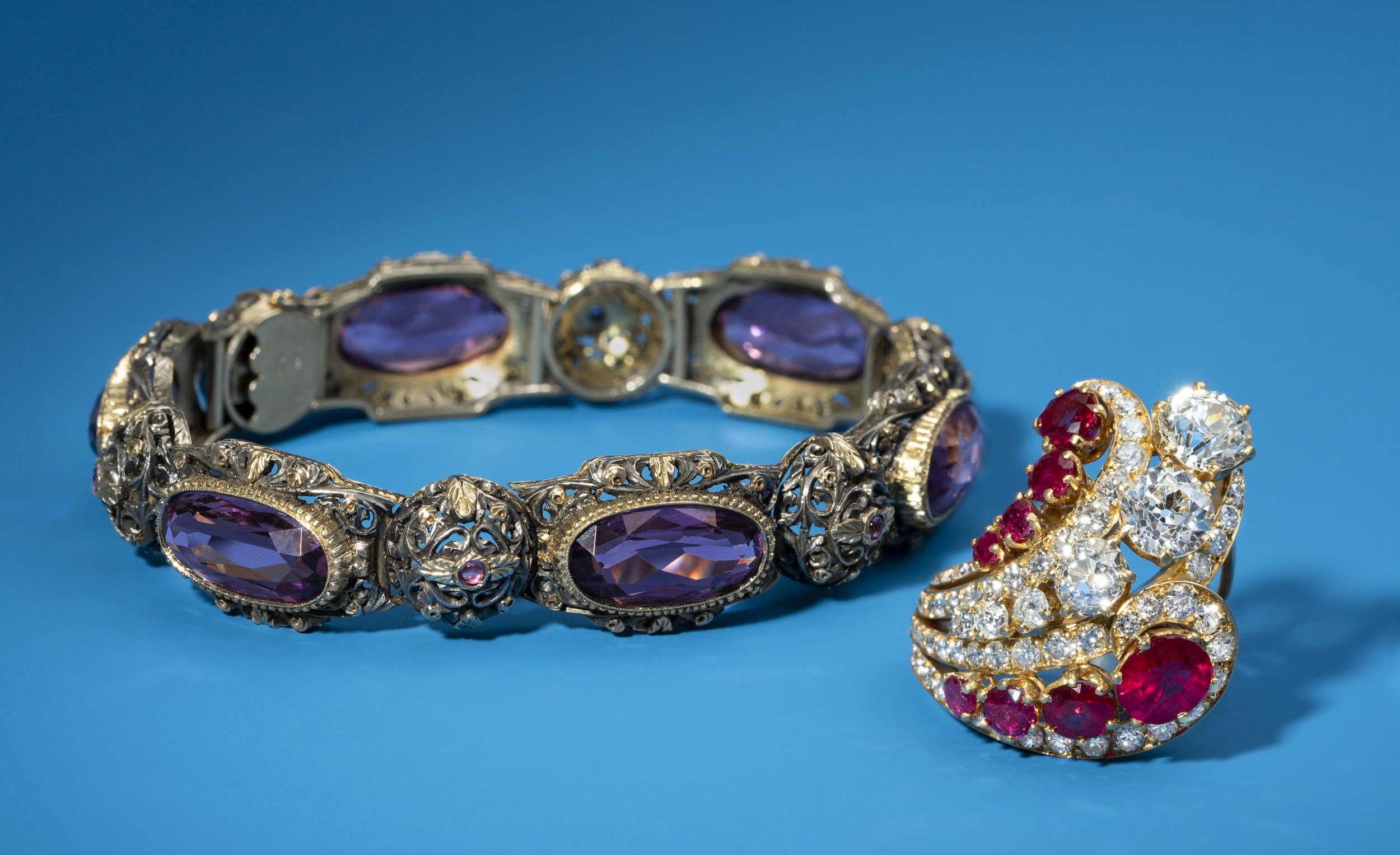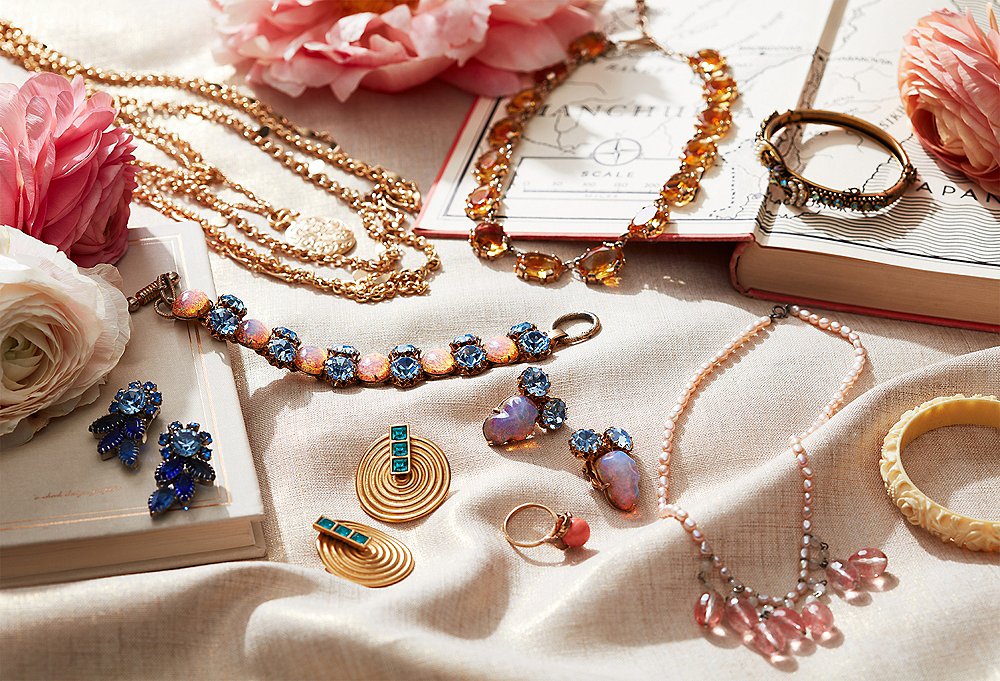Reveal the Rich History Behind Stunning Estate Fashion Jewelry Collections
The exploration of estate jewelry collections offers an one-of-a-kind window into background, revealing the elaborate connection in between workmanship and social advancement. What keys might these collections still hold?
The Beginnings of Estate Jewelry
How did estate fashion jewelry come to symbolize the abundant background and creativity of bygone ages? The origins of estate jewelry can be mapped back to different periods of craftsmanship, where fashion jewelry was not just an accessory however a reflection of social worths, technical improvements, and artistic expressions. Each item narrates, frequently connected with the lives of their previous proprietors, encapsulating personal narratives together with historical contexts.
The term "estate fashion jewelry" normally describes pre-owned items, frequently from considerable ages such as Victorian, Art Nouveau, or Art Deco. These pieces were produced with thorough focus to detail, showcasing the ability of artisans who utilized products like gold, silver, and valuable gems. Unlike modern precious jewelry, estate pieces typically feature unique designs that highlight the appearances of their time, thus serving as tangible links to the past.

Remarkable Style Ages
Throughout background, several remarkable style eras have actually dramatically affected the evolution of estate precious jewelry, each identified by unique designs, materials, and cultural contexts. The Georgian period (1714-1837) marked the beginning of complex designs, typically including nature-inspired themes and the usage of products like gold, silver, and gemstones set in sophisticated settings. Following this, the Victorian period (1837-1901) introduced romantic themes, with sentimental jewelry and ingenious methods such as the use of enamel and cameos.
The Art Nouveau period (1890-1910) commemorated organic kinds and the elegance of nature, using materials like opals and pearls in flowing designs. This was been successful by the Art Deco era (1920-1939), which embraced geometric patterns, strong colors, and elegant materials such as platinum and diamonds, mirroring the modernist spirit of the time.
The Mid-Century Modern age (1940-1960) showcased structured designs and making use of unusual products, emphasizing minimalism and capability. Each of these periods not only shows the artistic motions of their time however likewise envelops the societal worths and technological developments that formed jewelry style, making them an interesting topic for collection agencies and chroniclers alike.

Famous Estate Jewelry Collections
The abundant background of estate jewelry is beautifully exhibited by numerous renowned collections that display the creativity and craftsmanship from various style ages. Among one of the most famous is the Cartier Collection, which reflects the deluxe and advancement of the famous French jewelry expert. Parts from this collection commonly feature intricate designs and elegant gems, highlighting the brand's dedication to great craftsmanship.
Another noteworthy collection is the Duchess of Windsor's jewelry collection, which consists of numerous distinctive pieces, including the famous "Windsor" bracelet. This collection not just exhibits the style of the Art Deco period but additionally brings an abundant story of love and loss, as it came from Wallis Simpson, who notoriously wed Edward VIII.
The collection of the late actress Elizabeth Taylor additionally attracts attention in the realm of estate precious jewelry. With countless pieces made by distinguished jewelry experts like Bulgari and Cartier, her collection personifies prestige and refinement, emphasizing her individual design and fondness for distinct gems.
These famous estate jewelry collections serve as a testimony to the enduring attraction of great precious jewelry, providing insight right into the imaginative and social movements that shaped their development.
The Social Value
Estate precious jewelry collections hold extensive cultural value, mirroring not only the click this site aesthetic values of their respective ages but additionally the social and historic contexts in which they were developed. Each piece often embodies the workmanship and creative fads of its time, showcasing the advancement of layout and technology in jewelry production.
In addition, these collections function as concrete web links to cultural practices and routines. As an example, wedding celebration bands and heirloom brooches might signify love and familial bonds, while items embellished with specific gemstones can stand for regional or cultural identities. The products utilized-- whether gold, silver, or valuable rocks-- typically tell tales of profession, expedition, and the wealth build-up learn the facts here now of cultures.
Additionally, estate jewelry can function as historical artifacts, supplying insights right into the lives of individuals and the social standards they browsed. The way fashion jewelry was put on and valued can expose much concerning sex functions, standing, and individual expression within varying cultural landscapes. As such, estate jewelry transcends plain decoration, serving as an abundant narrative of human experience, creativity, and social heritage, inviting contemporary target markets to involve with the past in a meaningful means.
Caring for Your Estate Parts
Caring for estate precious jewelry items calls for a thoughtful technique to ensure their longevity and protect their one-of-a-kind features. Constantly tidy estate precious jewelry making use of a soft, lint-free fabric after each wear to get rid of oils and dust.
Storage space is similarly crucial; shop items separately in a fabric-lined original site box to stop tangling and scraping. Consider using anti-tarnish bags or towels for silver products, as this aids to reduce the tainting process. Additionally, avoid subjecting precious jewelry to too much dampness, extreme temperature levels, or direct sunlight, which can adversely impact gems and steels.
Consulting a jeweler experienced in vintage or antique pieces can provide customized care options. By carrying out these practices, collection agencies can protect their estate jewelry's visual and historic worth, making certain these pieces proceed to be treasured for generations to come.
Final Thought
In verdict, the expedition of estate precious jewelry collections reveals a tapestry of artistic expression and social value, showing the worths and visual appeals of different historical periods. Each item acts as a testimony to exceptional workmanship and the stories of those that once had them. Understanding the origins, layout eras, and noteworthy collections enhances admiration for these artifacts, highlighting their duty in protecting social heritage and motivating ongoing stewardship and look after these exceptional treasures.
The exploration of estate precious jewelry collections provides a distinct window into background, revealing the intricate connection between craftsmanship and social development. The beginnings of estate precious jewelry can be mapped back to different durations of workmanship, where precious jewelry was not merely an accessory however a reflection of societal values, technical developments, and imaginative expressions.The term "estate precious jewelry" usually refers to secondhand items, often from significant eras such as Victorian, Art Nouveau, or Art Deco.The abundant background of estate precious jewelry is beautifully exemplified by several distinguished collections that display the artistry and workmanship from different layout periods.In verdict, the exploration of estate jewelry collections exposes a tapestry of creative expression and cultural relevance, reflecting the values and appearances of various historic periods.